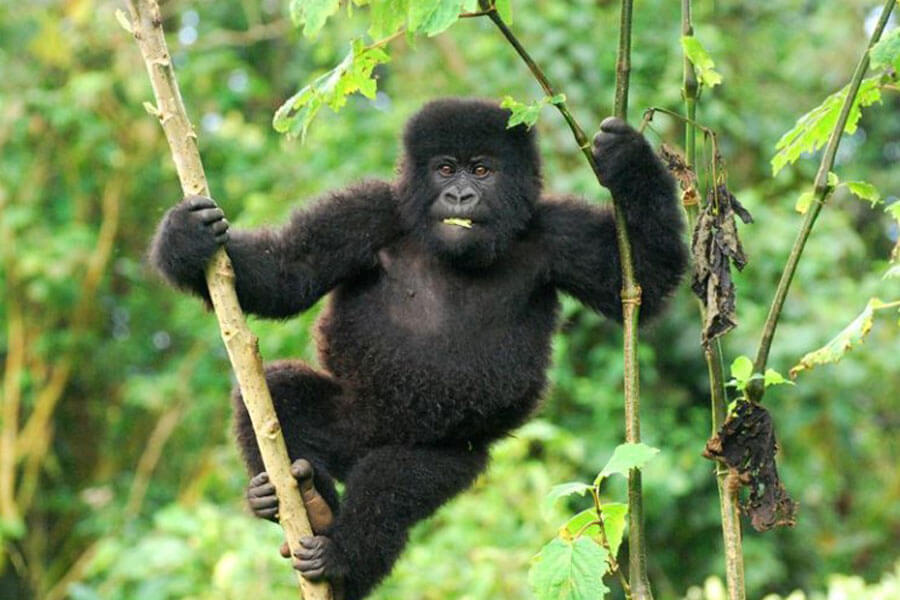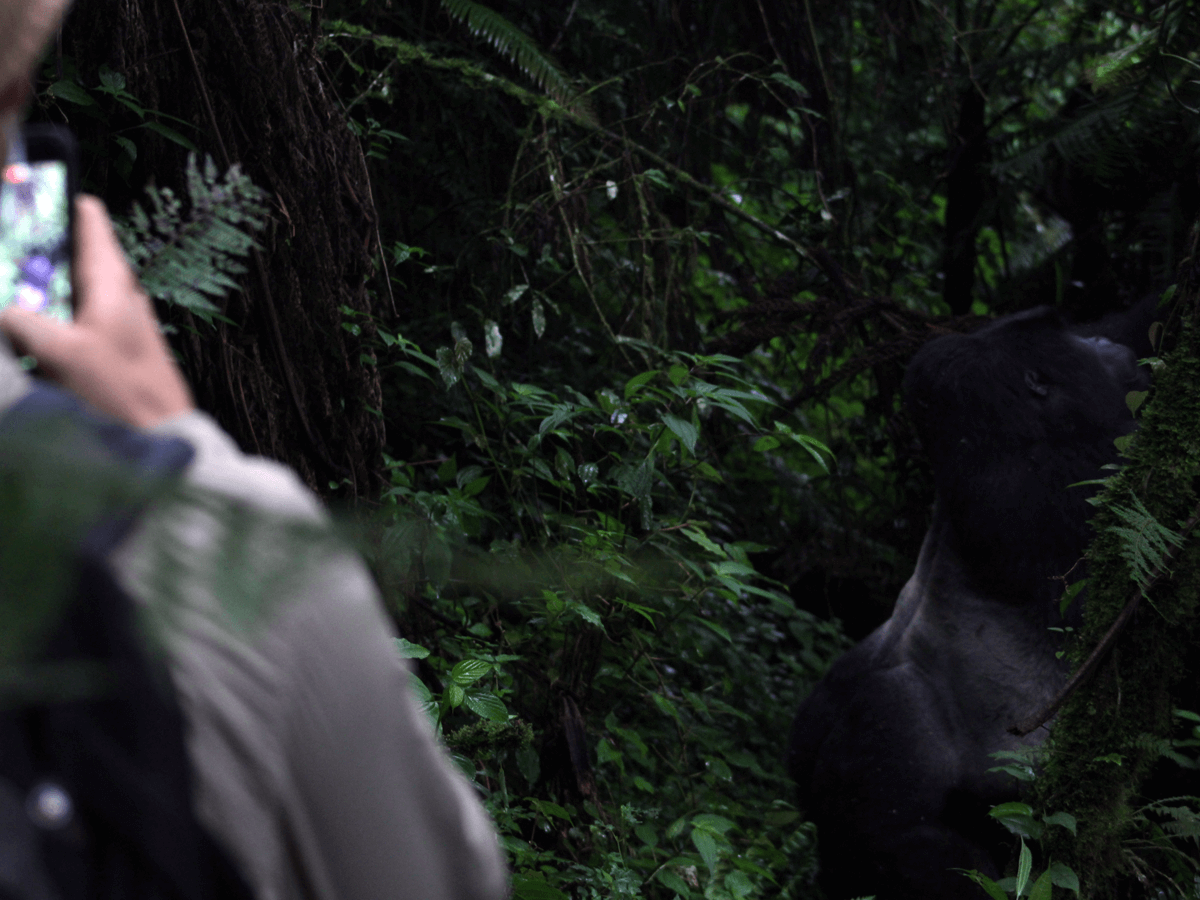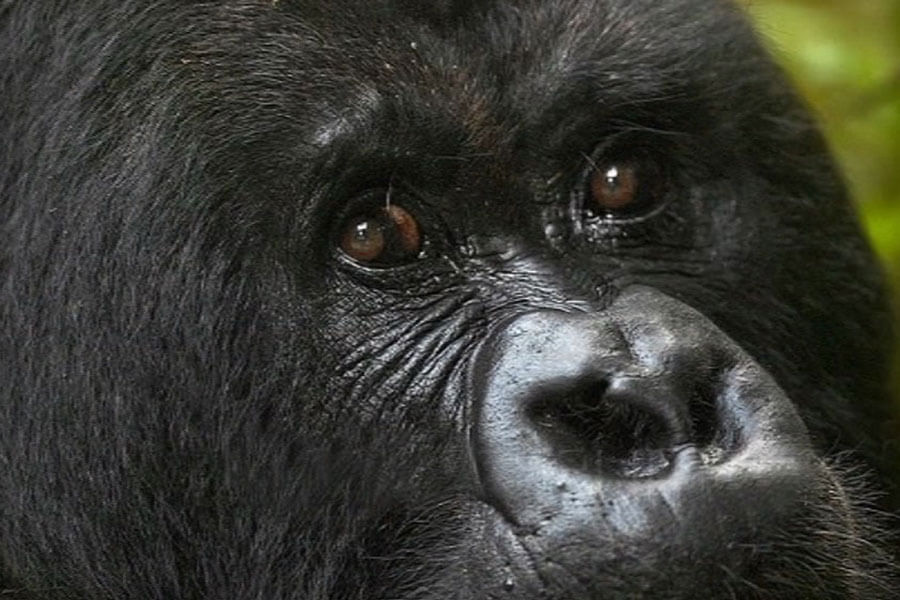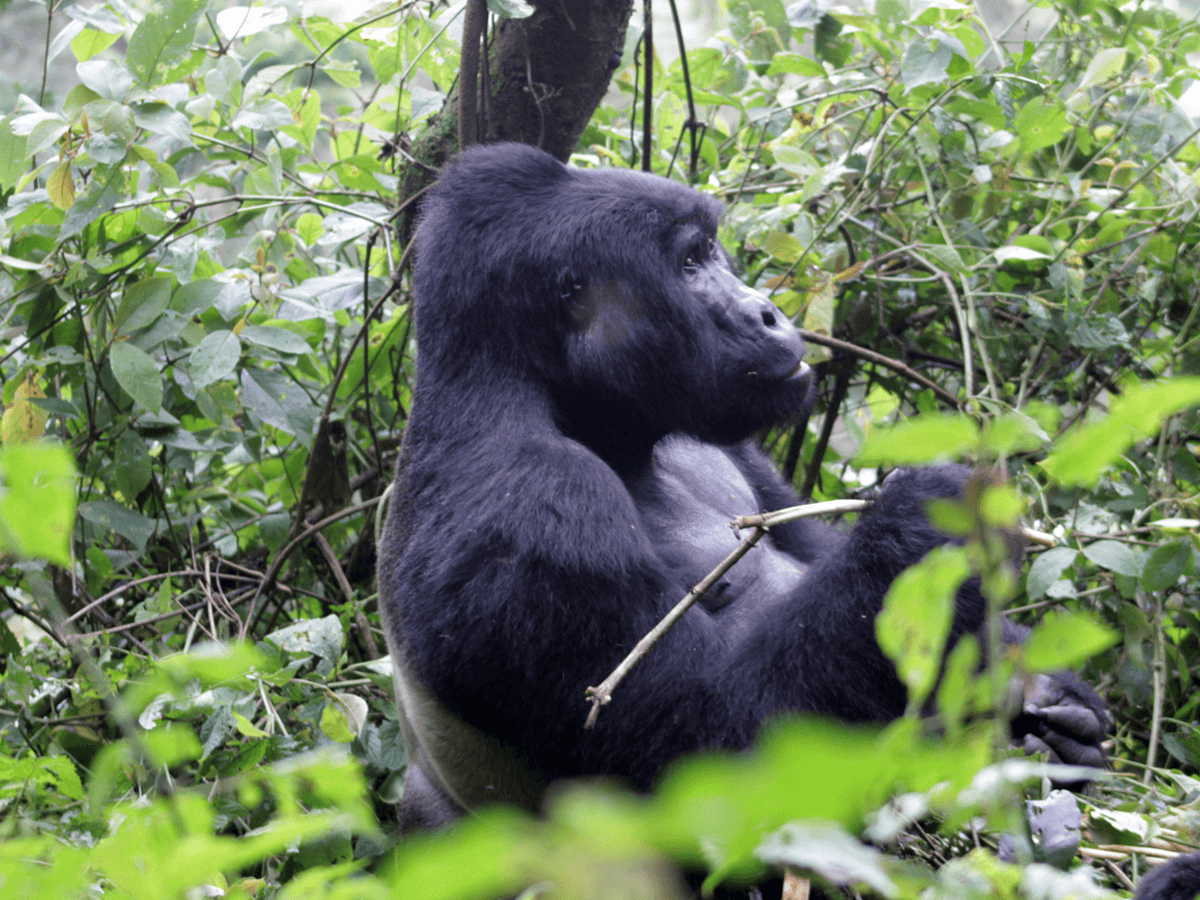Gorilla tracking is one of the most exclusive wildlife experiences in the world. The activity involves hiking through thick natural forests and steep mountain slopes in search of the endangered mountain gorillas.
The experience of tracking gorillas is exclusive because it happens in a few places and only a limited number of guests are allowed to visit the gorillas each day. Due to their endangered status, getting to see gorillas comes with a few rules and regulations.

In this article, we'll look at the various rules that must be adhered to when you go to track mountain gorillas in their rainforest habitat.
Gorilla Tracking Rules & Regulations
1. Keep A Distance Of 7 Meters From The Gorillas.
Given that gorillas can easily catch human diseases, keeping a safe distance prevents the spread of such diseases from humans to gorillas - and vice versa. At this distance, you will be able to have a close interaction with the gorillas without the risk of spreading diseases between humans and mountain gorillas.
The park rangers will be very aware of this and often advise and direct you on where to go. Always feel free to ask. They are very knowledgeable and helpful.
2. Don't Wander From The Group.
After finding the gorillas, you are supposed to stay with the group and move around as little as possible. While moving to a different viewpoint might be tempting, maybe even better for your pictures, you shouldn't surround the gorillas. Surrounding the gorillas will make them uneasy and probably suspicious which is not good.
As a group, you usually stay on one side of the gorillas and slowly move about as they do - without stepping too close, surrounding them or cutting in the middle of the group.

3. Keep Your Voice Down.
In your interactions, keep your voice down. This is respectful to the gorillas' serene home and the other people you tracked with. Additionally, all wild animals react to high volume with fear and gorillas are no different.
For this reason - among others, you can see why young children are not allowed to do gorilla treks.
4. Don't Smoke With The Gorillas.
While you are with the gorillas, you are not allowed to smoke. Gorillas and humans both have a risk of getting lung cancer and other illnesses from secondary smoking. Furthermore, discarded cigarette ends can easily lead to forest fires - destroying forests which have stood since the ice age.
5. Don't Stare Too Long Into The Gorilla's Eyes.
A long and intense stare might be interpreted as a sign of aggression by the gorillas. Besides the fact that gorillas are very peaceful and calming animals, they are still wild animals and you don't want to make them feel the need to be aggressive.
Just be mindful of the intense stare. Otherwise, you will be able to look into their red and kind eyes - and hopefully, register a connection like no other.

6. Turn Around To Sneeze Or Cough.
If you have any transmittable diseases, you are not allowed to go for gorilla tracking. Understandably, you might need to sneeze or cough. In this event, you are advised to turn away from the gorillas and sneeze or cough into your handkerchief.
If you need to ease yourself (pee or poo) talk to the ranger and they will guide you on what to do such that you can 'go to the bathroom' in the forest - safely.
7. No Flash Photography.
When you are with gorillas, your camera's flash should be disabled. Whether it is your phone or you carry a dedicated camera, the flash should be turned off in advance. As with most animals that live in the wild, flash photography is likely to scare the gorillas into a state of fight or flight.
If you are unfamiliar with your camera, it is best to test out some settings that would work well in the forest, and shoot in Manual mode. As the hike starts, you can occasionally take pictures around the forest to gauge the actual performance of your settings.
8. Don't Try To Touch The Gorillas.
For the same reason that a safe distance is to be maintained from the gorillas, you shouldn't try to touch the gorillas. Aside from the spread of diseases, gorillas are still wild animals and not pets.
Touching wild animals might happen in captive environments like zoos but not in wild habitats.
Keep in mind, that a gorilla is strong enough to snap a human arm or leg like a simple twig, so don't try and find out if that is true.
9. Don't Run From The Gorillas If They Approach.
In the rare event that gorillas come to you, stay calm and follow the guidelines of your ranger. Stay calm, act submissive and crouch down. Don't try to run or fight a gorilla, it is a wild animal that is stronger than you.
Being touched by gorillas happens rarely and you therefore shouldn't be expecting such an unlikely chance. Should that happen, you will have the best stories to tell, and you will feel like "chosen".

10. Don't Offer Any Food To The Gorillas
While gorillas are omnivores and can eat human food, you are not allowed to feed them. The diet of a gorilla comprises many plants that are freely available to the gorillas in the forest.
The only reason why mountain gorillas aren't found in zoos is that all previous attempts have failed. Giving gorillas human food/drinks could have a whole list of risks to the gorillas - all very bad.
Related article: Gorilla Food - what gorillas eat in the wild
Final Thoughts
The gorilla tracking rules and guidelines are quite simple to understand and follow. Before any group of guests can start their hike into the thick rainforest, there is always a briefing about these rules and more. This briefing is done by park officials.
The basis for these rules is protecting the gorillas and the environment they live in. Since every group of visitors is always led by an experienced ranger, you should freely talk to the ranger should you need any guidance. It is better to get clarification.
